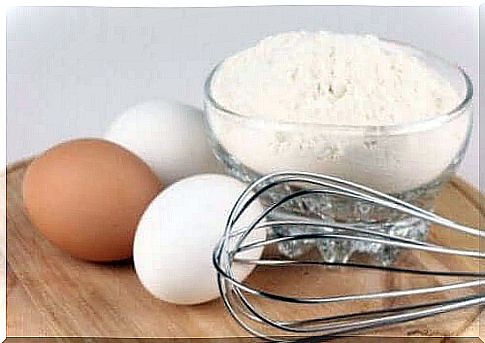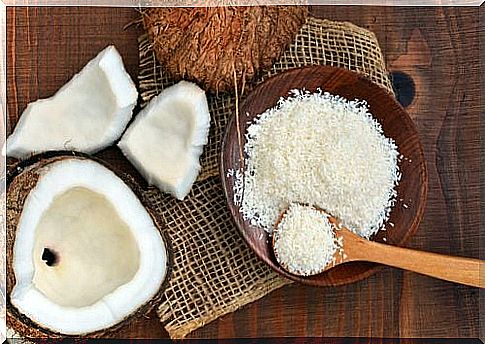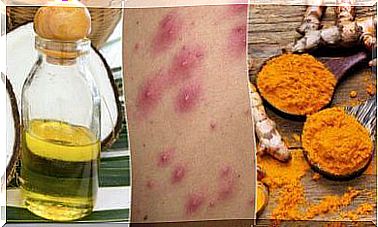Pão De Deus, A Delicious Portuguese Dessert

The Pão de Deus or ‘the Bread of God’ is a dessert originally from Portugal. This bun has a light consistency and a spongy texture with some shredded coconut on top. This ingredient was not added until later.
It was customary to eat this bread on All Saints’ Day. Now, however, many eat it all year round both in its place of origin and in other countries such as Brazil and Venezuela. After all, there were settlements of Portuguese communities there.
Many people claim that this dessert is over 200 years old. They also say that the coconut was added later after the Portuguese settled in Brazil.
People then started adding new flavors. These were then incorporated into their tradition. However, historians have still not confirmed this.
What is absolutely true about this dessert is that there are multiple recipes. Some contain some lemon juice or liqueur.
How do you make the recipe for the authentic Pão de Deus?

Ingredients for the dough (12 buns)
- a pinch of salt
- 1 slice of butter (100 g)
- 2 medium eggs
- 3/4 cup sugar
- 1/2 cup milk
- 4 cups whole wheat flour with yeast (480 g)
- 2 tablespoons fresh baker’s yeast (30 g)
- optional: grated lemon or orange, 3 tablespoons rum (45 ml) and vanilla extract
Ingredients for the garnish
- 1 medium egg
- 1 cup shredded coconut (100 g)
- 2 tablespoons powdered sugar (30 g)
- 2 tablespoons white sugar (30 g)
Preparing the dough for your Pão de Deus
- Pour the milk into a baking dish and heat it in the microwave for a few minutes. You don’t have to let it cook. Just heat it until it is lukewarm.
- Then add the yeast to the warm milk. Stir the milk thoroughly with a spoon. Then add half a cup of flour (60 g).
- Now beat this by hand until you have a mixture without pieces. Cover the bowl and let it sit for 10 to 15 minutes.
- Meanwhile, put the butter in a baking dish and melt it in the microwave.
- Pour the flour into a separate bowl, leaving some space in the center to add two eggs (don’t beat them) and the butter. Also add the sugar and yeast that you prepared earlier.
- Then mix everything with a hand mixer until a dough forms. Then roll the dough into a ball. Cover the dough with a damp cloth and let it rest at room temperature for several hours. As the dough rests, it will increase in size.
- Once this time is up, quickly sprinkle some flour on the surface where you will be kneading the dough.
- Knead it for about 5 minutes to give it some flexibility. It should then be soft enough that you can handle it easily.
- Now open a well in the middle of the dough (not too deep) and add a pinch of salt. Close it and continue kneading it for another 5 minutes.
Baking the dough

- Then divide the dough into several parts. Roll them into balls the size of a hand. Then lightly flatten them a bit to make them look like a sweet bun. Then set them aside.
- To prepare the garnish, mix the egg (without beating), the white sugar and the grated coconut in a bowl. Let it cool in the fridge until ready to use.
- Place baking paper on a baking tray and meanwhile preheat the oven to 180°C.
- Spread the buns on the baking sheet. Brush them with a beaten egg. Immediately after, apply the coconut, sugar and egg mixture to the top (1 tablespoon per sweet bun is enough). You have to spread this coconut mixture on the buns in such a way that it does not fall into the bread.
- Then place the buns in the oven for half an hour.
- Once they are brown, take them out of the oven and dust them with powdered sugar.
You can serve them warm or as soon as they have cooled. Everything will depend on your own taste. However, we also want to mention that people in Venezuela often eat their Pão de Deus with coffee. They also eat it filled with cow’s milk cheese (a cheese that is low in salt).
Some people make their Pão de Deus with cream fillings and others with jam. These options are also nice. Still, some people may find this a bit tacky. Now it’s up to you to experiment and choose what you like!









